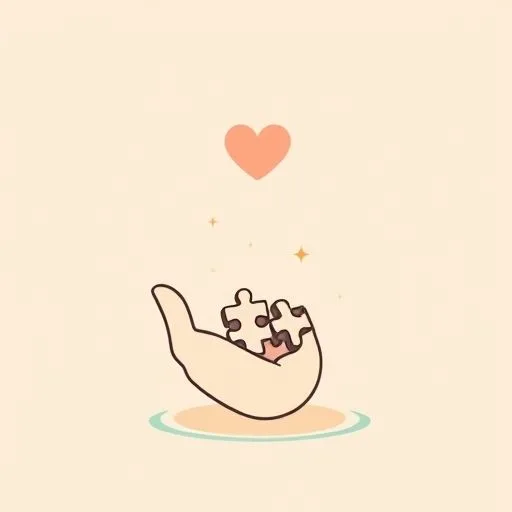
Ever watched your kid wrestle with chopsticks at dinner? Hands hovering, tongue bitten raw, heart pounding as they fumble… then that sudden spark when they get it? We’ve all lived this silent tug-of-war. Today I’m sharing what I’ve learned about stepping back—how waiting builds unshakeable confidence without empty praise or cookie-cutter rules. Just real talk from one parent to another.
The Two-Minute Rule: Why Waiting Isn’t Watching

You know that grocery store moment? Kid reaching for cereal boxes, stool wobbling, your hands itching to steady it. Here’s what changed for us: we give it two minutes. Not because we’re patient saints—we’re not. But because in that space? Magic happens. They might ask a stranger for help, stack boxes creatively, or abandon it for yogurt instead. Each choice builds problem-solving muscle you can’t teach through instructions.
Letting kids solve problems on their own isn’t about being cold or distant. It’s warm presence without rescue. When my daughter struggled with the toaster last week—bread jammed, eyes wide with panic—I bit my lip for 120 seconds. She unplugged it, used the handle slot. Now she troubleshoots appliances better than I do. That’s the gift waiting gives: competence earned, not handed.
Trust me, this isn’t easy. Especially for moms carrying invisible mental loads. But that restraint? It’s love in action. You’re whispering ‘I believe in your ability to figure this out’ without saying a word. And the best part? When they turn to you with ‘Look what I did!’ you see pure pride—not borrowed confidence.
‘What Do You Think?’: Turning Struggles Into Tiny Triumphs

My biggest wake-up call came when I’d blurt ‘Just do it like this!’ as my son tied shoes. Shut down his curiosity faster than a puddle in July. Now I ask ‘What do you think might work?’ during Lego meltdowns or homework hurdles. Suddenly, struggles become collaborations. He brainstormed using rubber bands to secure shoelaces before bed—now they stay tied all morning.
The secret to helping kids solve problems? Sometimes it’s about not stepping in at all. Make everyday moments puzzles. Juice spilled? ‘How should we clean this without making it worse?’ Orange selection? ‘Which one looks ripest? Let’s squeeze gently and see.’ These aren’t parenting tricks—they’re belief-builders. Each small victory compounds: grocery runs become science experiments, laundry folds turn into pattern games.
Resilience isn’t built in smooth sailing—it’s forged in the mess they navigate alone.
Here’s what surprised me: kids forgive our impatience faster than we forgive ourselves. One ‘sorry I jumped in’ and they’ll still share their next attempt. But that ‘I did it myself!’ glow? That lasts. Worth every spilled milk cleanup and tangled shoelace.
The Hidden Language of Silent Support

Let’s talk about the unspoken power of just being there. When your child’s wrestling with frustration—shaking a puzzle piece, tears welling—you don’t need solutions. A hand on their shoulder, calm breathing beside them, that quiet ‘I’m right here’ says everything. Moms especially get this: your presence alone is the safety net they need to risk trying again.
Remember kindergarten paint disasters? We stopped rushing to fix crooked brushstrokes. Now messy masterpieces hang proudly. Why? Because showing up without fixing teaches them their effort matters more than perfection. That spilled milk? Clean it together while discussing why glass breaks but paper towels save the day. Suddenly, accidents become curiosity fuel.
For us dads especially—this quiet support builds deeper bonds than any quick fix. When she glances up mid-struggle and meets your eyes? Don’t solve it. Smile and nod. That’s the echo they carry: ‘Even when I fail, I’m safe.’ And for moms watching this unfold? It lightens that invisible load. Seeing your child trust their own abilities? That’s the real victory.
When Stepping Back Actually Moves You Closer

Here’s the paradox nobody warns you about: waiting draws you nearer. That time I held back during bike training—no running beside her, just standing at the driveway’s end—she wobbled straight toward me shouting ‘I did it!’ The pride in her voice? Thicker than any hug. Why? Because my restraint said ‘I know you can’ louder than constant coaching ever could.
Why waiting builds kids’ problem solving skills is simple: it forces ownership. Homework battles vanished when we switched from ‘Here’s the answer’ to ‘Want to grab whiteboards and sketch this out?’ Now family math time involves bad drawings and roaring laughter. The struggle didn’t disappear—it became joyful. Because real confidence grows in soil watered by ‘I tried’ not ‘you fixed it.’
So next time they’re stuck, try counting to ten in your head. Watch how they rise. See the way they test solutions, discard dead ends, finally grasp success. That’s the sound of young wings unfolding. And for moms carrying so much? This isn’t just about kids learning—it’s you realizing you raised someone who doesn’t need constant rescuing. Now that’s a sigh worth waiting for.
Source: Thanx Rolls Out AI Agents That Think, Plan and Execute Restaurant Marketing Strategies, Restaurant Technology News, 2025/09/12 13:24:55
